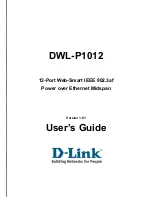
2015-01
70
Dictionary for VisuNet
ISO / OSI reference model
Is an Open System Interconnection
standard,
introduced by the International
Standardisation
Organisation (ISO) in 1984. It consist of 7
layers to represent the different levels of
communication in a
very general form.
Layer 1 is the physical layer and specifies
e.g. the
cable type of an electrical data
communication and
how bits are transferred (e.g.
100BaseTX).
Layer 2 shall specify the basic
representation of the
data and e.g. its correctness after
reception
(frames, e.g. Ethernet)
Layer 3 is the Network layer and e.g.
administrates
the partners in a communication and their
addresses
(packets, e.g. IP))
Layer 4 is the connection between the
system
layers 1 – 3 and the application (e.g.
TCP)
Layers 5 - 7. Here the addressing /
decoding and
multiplexing / demultiplexing of the data
shall be
defined.
Layers 5, 6 and 7 care on the further
forward of the
data up to the interface between
application and
computer.
LAN
Network Type
Local Area Network, max layout within a
room,
building or the own premises
MBit/s
speed unit for data
Megabit per second, data transfer rate
between
two points
Network
connection of min. 2 points to transfer
e.g. information
RDP
Protocol
Remote Desktop Protocol, built-in in the
Microsoft
operating systems Windows 2000 Server,
XP pro,
2003 Server and Vista. Also 3
rd
party
products from
several software houses. Software
protocol for
compression and transfer of keyboard,
video, mouse
and serial interface data from one
computer to
another. It is hereby possible to
completely control a







































